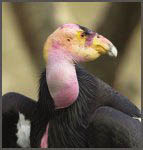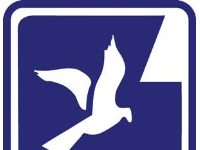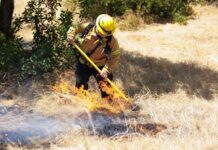
An ongoing national effort to reintroduce the endangered
California Condor will take an important step locally Wednesday
morning, when biologists and rangers plan to transport six birds to
their newly built holding pen at Pinnacles National Monument.
A difficult one-mile hike with the six birds in cages will begin
at about 6:30 a.m. The facility at the top of a ridge has been
under construction since June. It includes the pen, an enclosed
mesh area and isolated pens for severe weather.
An ongoing national effort to reintroduce the endangered California Condor will take an important step locally Wednesday morning, when biologists and rangers plan to transport six birds to their newly built holding pen at Pinnacles National Monument.
A difficult one-mile hike with the six birds in cages will begin at about 6:30 a.m. The facility at the top of a ridge has been under construction since June. It includes the pen, an enclosed mesh area and isolated pens for severe weather.
“Bringing them over will be time-consuming, but not necessarily difficult,” said Rebecca Leonard, lead biologist at Pinnacles.
Leonard said the project includes “a lot more” than the work at the monument’s 24,000 acres of open wilderness. The condors, between 6 months and 1 year old, have been nurtured at Big Sur State Park since mid-April. Before that, they were bred at the San Diego Zoo
The program is a cooperative effort of Pinnacles, the U.S. Fish and Wildlife Service, the Ventana Wilderness Society and other organizations. The California Condor is federally protected from harm because it has been on the Endangered Species list since 1967.
San Benito County is part of one of only three regions in the world accommodating the reintroduction program. The others are Southern California and an area near the Grand Canyon in Arizona.
Once the scavenger birds arrive, park officials plan to avoid any human presence near the condors. The biologists will interact with the birds “only when absolutely necessary,” Leonard said, while most observation will be conducted from a quarter mile distance, “so they don’t see us.”
After three months in the facility, park officials plan to release the condors into the wild. Observers will not be allowed near the condors, but may have the opportunity to see them in the park after the release.






